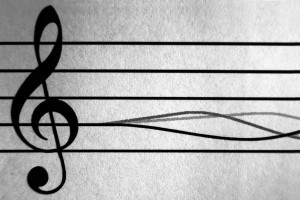Talking about alto sax transposition the other day in response to Jerry’s question. Transposition on alto saxophone is a bit trickier than tenor saxophone, on tenor (and soprano) you can pretty much transpose on sight.
That means if you play a “C” on your tenor saxophone, it’s the same as a Bb on piano.
The interval between C and Bb is a whole step.
So if you read music written in C (piano music for example) you go up a whole step to transpose it. If you see a Bb, you play C, if you see a G you play A, etc.
Not too hard to get comfortable just playing music by thinking ‘up a whole step’.
Any questions?



Neal:
Yes that does work especially if you are doing combo tunes or you don’t care what octave you are in. On tenor sax you can get away with just reading up a whole step however the correct interval of transposition is a Major 9th or an octave and a whole step.
So if the concert pitch is 1st line E in treble clef the correct transposition should be F# 5th line treble clef. This is especially important when you are voicing out a sax section for a big band or a small horn section. You want the harmony notes to be in the right octave so the chord will sound right. Also if you want a true unison in your sax section you need to have every note in the right octave.
Lets go back to 1st line E in treble clef for our concert pitch. If you want it in unison the altos will play a C# in the 3rd space treble clef.
The tenors will play F# 5th line treble clef and the bari will play the C# above the staff, written an octave higher than the alto part. If the tenor plays a 1st space F# instead of a 5th line F# the voicing will sound in octaves not unison. Same for the bari, if he/she plays 3rd space C# with the altos that part will sound in octaves not unison.
Just thought I would put it out there correctly so if someone wants to voice a chord they’ll do it correctly.
Larry W
Lets go 1 step further, lets voice a C9 for a horn section of tpt, alto, tenor and bari. From the top and going down in concert pitch the tpt sounds a 4th line D. The alto sounds a 3rd line Bb, lets give the tenor the 13th a 2nd space A and the bari gets a 1st line E all concert pitch.
Now lets transpose it. The tpt plays a 4th space E, the alto plays the G just above 5th line F. The tenor plays a B above the staff and the bari plays the C# above the staff.
Try it out with some of your friends Neal. The tension occurs between the alto and tenor part in this example.
Take care,
Larry W